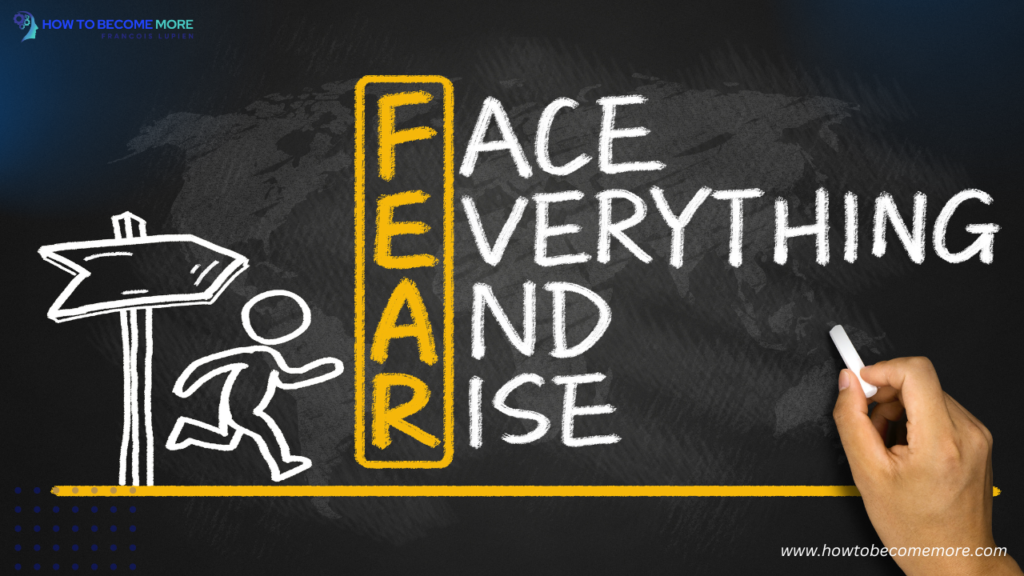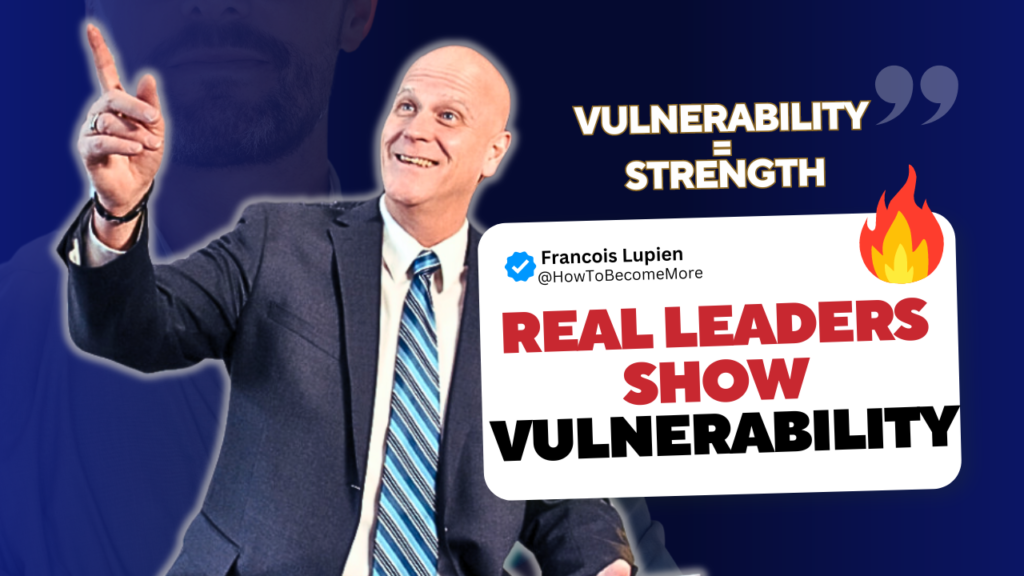
In today’s business landscape, being a leader means navigating constant change, making tough decisions, and managing the complex emotions that come with the weight of responsibility. For many CEOs and executives, there’s one challenge that often looms larger than the others—the fear of vulnerability.
As a leader, showing vulnerability can feel risky. There’s a deeply ingrained belief that strength means never showing doubt or weakness, that to be a “great” leader is to always have the answers. But what if vulnerability was the key to unlocking deeper connections with your team, making better decisions, and leading with authenticity?
The truth is, vulnerability isn’t a weakness. In fact, it can be one of your greatest assets as a leader. By embracing vulnerability, you not only show your team that you’re human, but you also open the door to stronger relationships, more authentic communication, and greater trust.
In this blog, we’ll explore why vulnerability is often feared in leadership, how to work through that fear, and why the most successful leaders view vulnerability as a strength. Let’s dive in.
Why Leaders Fear Vulnerability?

For many CEOs and business leaders, vulnerability is seen as a threat to their authority. The fear is simple: If I show vulnerability, people will doubt my ability to lead. This fear often stems from deeply rooted beliefs about what leadership should look like—strong, confident, and in control at all times.
Here’s the problem: when leaders suppress vulnerability, they create a facade that can distance them from their teams. Employees may feel that their leader is unapproachable or disconnected. Worse, the leader themselves may feel isolated, carrying the burden of leadership without any outlet for their own fears, doubts, or challenges.
There are a few key reasons why vulnerability is feared in leadership:
- Fear of Losing Respect: Many leaders worry that showing vulnerability will make them seem weak or indecisive, causing their team to lose respect for them.
- Pressure to Maintain Control: In high-stakes environments, leaders often feel the need to project a sense of complete control. Admitting uncertainty or asking for help may seem like it will shake that foundation.
- Fear of Being Judged: Leaders, especially women CEOs, may fear being judged more harshly than their male counterparts for showing vulnerability. The pressure to prove themselves can be even greater in male-dominated industries.
- Unspoken Expectations: Society often paints leadership as synonymous with perfection and invulnerability. CEOs may feel that they’re expected to have all the answers, all the time.
But what happens when leaders suppress vulnerability for too long? The result is often emotional exhaustion, strained relationships, and an inability to connect with their team in meaningful ways.
Why Vulnerability is Actually a Strength?
Here’s the shift that many successful leaders have embraced: Vulnerability is not a sign of weakness—it’s a sign of courage.
When you show vulnerability, you demonstrate that you’re self-aware, honest, and willing to be real with your team. These qualities build trust, foster a collaborative environment, and make you a more relatable and empathetic leader. Teams are more likely to follow leaders who are authentic than those who try to appear perfect.
Here are three reasons why the best leaders view vulnerability as a strength:
- It Builds Trust: Trust is the foundation of every successful team. When you show vulnerability, you signal to your team that it’s okay to be human, to make mistakes, and to learn from them. This openness encourages others to share their own challenges, creating a culture of honesty and trust.
- It Encourages Authentic Communication: Vulnerability leads to open and honest communication. When your team feels that they can approach you without fear of judgment, they’re more likely to share ideas, give feedback, and voice concerns. This transparency can lead to better decision-making and a stronger team dynamic.
It Promotes Growth and Learning: Leaders who embrace vulnerability are open to learning and growth. They recognize that they don’t have all the answers and that seeking input from others only makes them stronger. By being vulnerable, you model a growth mindset for your team, showing them that it’s okay to ask for help and strive for continuous improvement.
How to Overcome the Fear of Vulnerability?

Now that we’ve established that vulnerability is a strength, the question becomes: How do you overcome the fear of showing it?
For many leaders, the journey to embracing vulnerability is a gradual one. It starts with small steps and a shift in mindset. Here are three strategies to help you work through the fear of vulnerability:
The first step to overcoming the fear of vulnerability is to reframe it as a courageous act. Instead of seeing vulnerability as a risk to your authority, view it as a powerful tool that enhances your leadership.
Ask yourself: What message am I sending to my team when I pretend to have all the answers? Is that the kind of culture I want to foster—one where uncertainty and mistakes are hidden, or one where people can be open, learn from each other, and grow?
By reframing vulnerability as an opportunity for growth, you allow yourself to step into a more authentic version of leadership. And in turn, you encourage your team to do the same.
2. Start Small with Vulnerability
Vulnerability doesn’t mean baring all your insecurities at once. It’s about being honest and real in appropriate moments. You can start by sharing small, personal stories or admitting when you don’t have all the answers. For example, if you’re facing a tough decision, it’s okay to tell your team, “This is a challenging situation, and I’m still working through the best solution.”
Starting with small acts of vulnerability allows you to test the waters and build your confidence in being open with your team. Over time, you’ll see that being vulnerable doesn’t erode respect—in fact, it often increases it.
3. Focus on Connection, Not Perfection
At its core, leadership is about connection. It’s about building relationships with your team and inspiring them to reach their full potential. When you focus too much on being “perfect,” you create a distance between yourself and those you lead.
Instead of striving for perfection, focus on connection. Allow yourself to be human. When you show that you’re willing to be vulnerable, you give others permission to do the same. This creates a culture of openness, trust, and collaboration—one where everyone feels safe to contribute their best work.
Developing Courage and Vulnerability as a Leader
As a CEO, developing the courage to show vulnerability is a journey. It’s about learning to trust yourself and your team. It’s about letting go of the need for perfection and embracing the reality that true leadership is built on authenticity and connection.
To cultivate this courage, you can start by:
Practicing self-reflection: Understand the moments where fear of vulnerability holds you back and explore why.
Seeking feedback: Ask trusted colleagues or mentors to give you feedback on how vulnerability could enhance your leadership.
Engaging in confidential conversations: Sometimes, having a safe space to talk through your fears and challenges is the key to unlocking your full potential as a leader.
By working on your courage and vulnerability, you not only grow as a leader but also create a more trusting, engaged, and motivated team. The leaders who inspire the most are those who are willing to be real with the people they lead.
Taking the Next Step: Connect with Me for Confidential Coaching

If you’re ready to embrace vulnerability and unlock your true potential as a leader, I’m here to support you on that journey. Through confidential, one-on-one coaching, we can explore the challenges you’re facing, work through any fears or self-doubts, and help you develop the courage to lead authentically.
Whether you’re struggling with decision fatigue, internal conflicts, or the pressure of always needing to have the answers, I can help you navigate these challenges in a way that’s empowering and transformative.
Conclusion
The fear of showing vulnerability is one of the biggest challenges that CEOs and leaders face, but it doesn’t have to be. By reframing vulnerability as a strength, starting small, and focusing on connection, you can build the courage to lead with authenticity.
If you’re ready to take the next step in your leadership journey, I invite you to reach out and connect with me. Together, we can explore the power of vulnerability and help you become the leader you were meant to be.
You don’t have to face these challenges alone. Let’s connect and start a confidential conversation about how you can lead with vulnerability, courage, and confidence.

Click Here To Watch The Video
Ready to start your confidential conversation? Reach out to me today, and let’s uncover the leader you’re destined to be.





